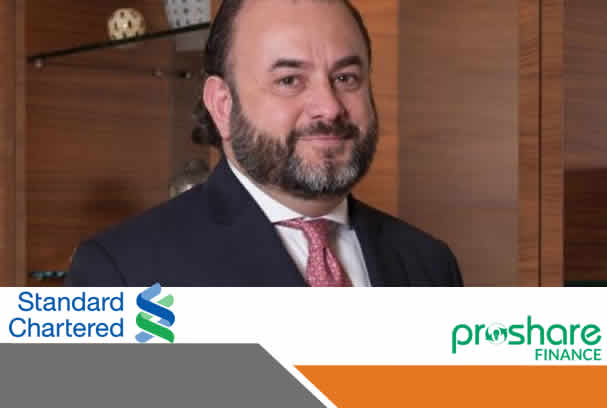Monday, April 01, 2019 10:00AM / Alexis Calla*
In our 2019 outlook, one of the key messages that we have constantlycommunicated over the years is the importance of diversification. While we getthe sense that some of our investors have been heeding this message, it is alsoclear that some are yet to be convinced.
This year, in conversations with some clients, we introduced the idea of“emotional” investment returns, highlighting that the way you implementdiversification can have an impact on how your investment returns affect you.This can, in turn, impact your future investment decisions which could bedetrimental to your long term financial returns. This idea clearly resonatedwith them and we decided to share it more broadly.
One of my favourite books is Daniel Kahneman’s Thinking Fast andSlow. Kahneman is a Nobel prize winner for his research (with Amos Tversky)into behavioural biases. One of their theories is “prospect theory”, whichstates that “the pain of losing is 2 times greater than the pleasure ofwinning”. Let’s examine the recent performance of a couple of different assetclasses in recent times to demonstrate the importance of this finding.
One of the most popular asset classes in 2018 was US equities, whichrose 11.2% from its start of the year level of 5212 to its 5794 peak-level inSeptember, before falling 14.0% from the peak to its year-end level of 4984.From a “classic financial” point of view, if this was the person’s onlyinvestment (let us say USD 10,000), the loss would have been 4.4%. Not ideal,but hardly the end of the world. However, from an “emotional” point of view itwas probably a lot worse. Taking Kahneman’s 2:1 emotional cost/benefit ratiointo account, the investor would have experienced 11.2 gain in ‘emotionalpoints’ followed by a 28 points loss (2 multiply by 14), before arriving at anet loss of 8.8 “emotional points”. What an emotional roller coaster!
But what about an investor who got intrigued by our call fordiversification?
There are two potential ways to achieve this. One way is to investequally in two different funds. The second is to invest in a fund that has a50:50 split between the two asset classes. While they are financially equivalent(assuming the fund manager invests in the same underlying assets), emotionallythey can be very different.
To work fully, financially as well as emotionally, diversificationrequires investors to look at their investments as a pool and not as a set ofseparate items. Another Nobel prize winner, Richard Thaler, established thatmany of us have a tendency called “mental accounting” that often prevent usfrom looking at things in totality. What this means is we all have the tendencyto look at each individual line of an investment portfolio. This can influenceus to make sub-optimal decisions.
Developing the above analysis further, let’s take the example of aninvestor who decided to split her US equity investment, allocating USD 5,000 toglobal bonds. On this second investment, she would have made a loss of 1.9%(loss of 3.8 “emotional points”) through to the peak in the US stock market andthen a gain of 0.7% (gain of 0.7 “emotional points”) in the remainder of theyear for a net loss of 2.4 “emotional points” over the year. The combination ofthe two investments would have been a 4.6% gain through to the peak in the USstock market and then a loss of 7.1% in the remainder of the year for a netloss of 2.8% over the year. But “mental accounting” would have prevented ourinvestor from aggregating ‘emotional’ returns, the equity allocation remaininga painful 8.8 “emotional points” loss.
However, for the investor who decided to invest USD 10,000 in one fundthat diversified across both US equities and global bonds, her return wouldhave been 4.6% (4.6 “emotional points”) through September and then a loss of7.1% (-14.2 “emotional points”) in the remainder of the year for a net -5.6“emotional points” loss.
As you can see, the financial return is clearly the same at each point,but the ‘emotional’ returns can be very different if the investor mentallyaccounts for each individual investment.
When using a balanced product, the reduction in the ‘emotional’ painduring the equity market fall (-14.2 points vs -28 points) far outweighs theloss of ‘emotional’ gain up to the peak period (4.6 points vs 11.2 points).
The risk of ignoring the investor’s ‘emotional’ pain would be so greatthat they would sell what is hurting them. Not only could this distract themfrom their long-term objectives, but in this instance, it would also have meantselling equities just before the strong rally we subsequently saw since theturn of the year (+11.8%).
Helping our clients make less biased investment decisions is one of ourkey objectives at Standard Chartered Bank. The above academic research,together with our day-to-day experience with clients, suggests investors shouldallocate a significant portion of their investments to core diversifiedholdings as we believe this will help them manage their emotions and stay ontrack when it comes to their long-term financial goals.
*Alexis Calla is the Chief Investment Officer at Standard Chartered Bank
Related News
1. A ComparativeAnalysis of Mutual Funds in Nigeria
2. Mutual Funds AndInvestment Management – The Proxy Process
3. NSE PartnersWith Market Stakeholders, Launches Mutual Funds Trading Platform
4. Mutual Funds -ATale of Mixed Fortunes
5. Mutual Funds CanCreate Wealth and Fund Critical Infrastructure – FSDH Research
6. Nigeria’sPost-election Economic Reality: Investment As The Multiplier
7. Codeof Ethics and Standards of Professional Practice for Registered InvestmentAdvisers in Nigeria
 Lagos, NG • GMT +1
Lagos, NG • GMT +1











 1745 views
1745 views







 Sponsored Ad
Sponsored Ad
 Advertise with Us
Advertise with Us









